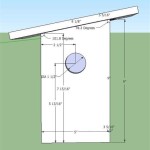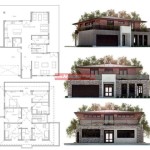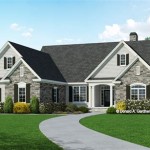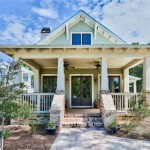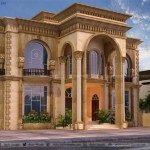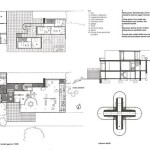600-800 Sq Ft House Plans: A Comprehensive Guide
For individuals or couples seeking comfortable living without excessive space, house plans within the 600-800 square foot range offer a compelling balance of functionality and efficiency. This size category accommodates a variety of layouts and architectural styles, catering to diverse lifestyles and budgets. This article explores the key considerations and advantages of choosing a house plan within this square footage.
Advantages of Smaller Footprint Living
Smaller homes offer numerous benefits, particularly for those prioritizing affordability and low-maintenance living. Construction costs are typically lower due to reduced material requirements and labor. Utility expenses are also significantly lower, aligning with a growing emphasis on sustainable living. Cleaning and general upkeep are less demanding, freeing up time for other pursuits. Furthermore, smaller spaces encourage thoughtful organization and minimalist living, fostering a sense of intentionality within the home.
Key Considerations for 600-800 Sq Ft Plans
Careful space planning is paramount when designing a smaller home. Maximizing every square foot through strategic layout and multifunctional furniture is essential. Consider open-concept designs to create an illusion of spaciousness and promote natural light flow. Vertical space utilization, incorporating lofts or high ceilings, can add valuable storage or living area. Prioritizing needs over wants helps determine essential spaces and features while eliminating unnecessary elements.
Exploring Different Architectural Styles
The 600-800 square foot range can accommodate various architectural styles. Cabin-style plans offer rustic charm and cozy living, often featuring a compact footprint and efficient layouts. Modern designs emphasize clean lines and open spaces, utilizing large windows and minimalist aesthetics to maximize the sense of space. Tiny homes, typically at the lower end of this range, prioritize mobility and extreme efficiency, often incorporating innovative storage solutions and sustainable features. Traditional style homes can also be adapted to this size, focusing on classic architectural elements and efficient floor plans.
Optimizing Functionality and Flow
Creating a functional and comfortable living space requires careful consideration of room placement and flow. The kitchen, often the heart of the home, can be efficiently designed with a galley or L-shaped layout. Combining the living and dining areas creates an open, airy feel. Bedrooms should be strategically placed for privacy, potentially utilizing built-in storage to maximize floor space. Bathrooms can be designed with space-saving fixtures and clever layouts to maintain functionality without sacrificing comfort.
Incorporating Outdoor Living Spaces
Extending the living area outdoors allows for a larger perceived space and enhances the enjoyment of the surroundings. A deck, patio, or porch adds valuable square footage for relaxation and entertaining. Landscaping can create a seamless transition between indoor and outdoor spaces, enhancing the overall aesthetic appeal and functionality of the property.
Customization and Personalization
While pre-designed plans offer a convenient starting point, customization allows for tailoring the home to specific needs and preferences. Modifying room sizes, adding or removing features, and adjusting architectural details can create a truly personalized living space. Working with an architect or designer can ensure that customizations are implemented effectively while maintaining structural integrity and optimizing functionality.
Finding the Right Plan
Numerous online resources and architectural firms offer a wide selection of 600-800 square foot house plans. Filtering searches by architectural style, number of bedrooms and bathrooms, and specific features can help narrow down the options. Consulting with building professionals can provide valuable insights into site considerations, local building codes, and cost estimations.
Budgeting and Construction
Developing a realistic budget is crucial before embarking on any construction project. Factor in land acquisition costs, permitting fees, material expenses, and labor costs. Choosing energy-efficient materials and appliances can lead to long-term savings on utility bills. Researching local builders and obtaining multiple bids can help ensure competitive pricing and quality workmanship.
Sustainable Design Considerations
Incorporating sustainable design principles into a smaller home can further enhance its efficiency and environmental impact. Utilizing energy-efficient windows and insulation, installing solar panels, and choosing sustainable building materials are just a few examples. These features not only reduce environmental footprint but also contribute to lower operating costs over the lifespan of the home.

600 800 Sq Ft House Plans Google Search Mobile Home Floor Tiny

Small House Plans And Tiny Under 800 Sq Ft

Cabin Style House Plan 1 Beds Baths 600 Sq Ft 21 108 Tiny Plans Small Floor

800 Sq Ft House Plans 10 Trending Designs In 2024 Styles At Life

800 Sq Ft House Plan Designs As Per Vastu

800 Sq Ft House Plans 10 Trending Designs In 2024 Styles At Life

Small House Plans And Tiny Under 800 Sq Ft

800 Sq Ft House Plans 10 Trending Designs In 2024 Styles At Life
:max_bytes(150000):strip_icc()/SL-731_FCP-83e310d6c4f4422a88bd36464339bf30.jpg?strip=all)
26 Tiny House Plans That Prove Bigger Isn T Always Better

3 Bedroom 800 Square Foot House Plans Google Search Duplex Small Floor


